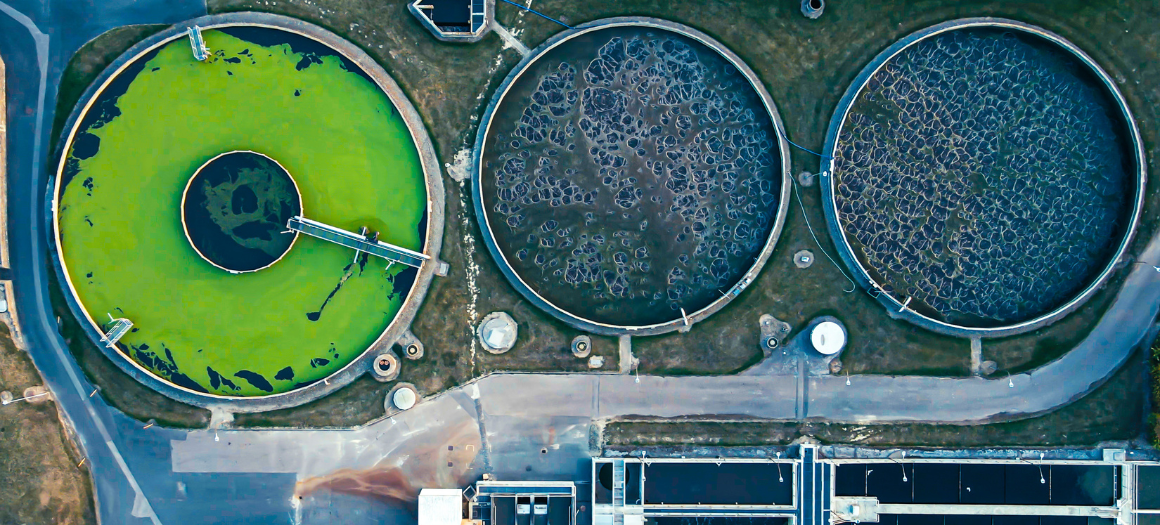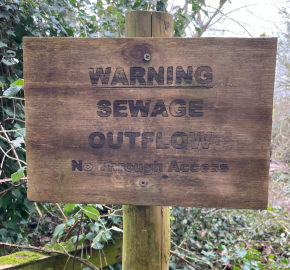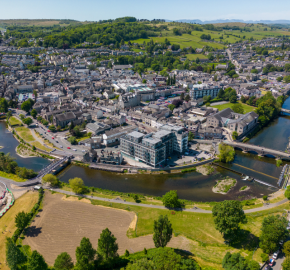The impacts of pollution on English rivers

Our freshwater ecologist, Sam, reviews the recently published research paper: The combined effects of treated sewage discharge and land use on rivers.
This paper gives a really interesting insight into the impacts of pollution on English rivers. Following publication, there have been some misleading tabloid headlines implying that sewage pollution is a bigger threat to our rivers than agricultural waste.
This study shows that sewage outputs have a negative impact on river health regardless of the surrounding land use. The paper also demonstrates that agriculture could be having a greater impact on sensitive invertebrate species in heavily farmed areas.
The research objective
The authors investigated sites up and downstream (5-10m) of sewage treatment works (STW) discharge points and recorded if the surrounding land for nearly a kilometre upstream included agricultural or urban areas. They analysed changes in water nutrient load and sewage fungus abundance, as well as changes to algal and invertebrate communities.
What their analysis primarily shows is that treated sewage discharge had the greatest impact on water quality and aquatic species in the rivers, but as the sampling sites were located on either side of an STW discharge this was the intended aim of the study.
“Sampling distance was chosen to ensure the detection of the effects of treated sewage discharge, both upstream and downstream (if any)”.
What the analysis found
Below the STW there were higher concentrations of nutrients (nitrates and phosphates) and sewage fungus, compared to their upstream control sites. Additionally, they found that downstream there was an increase in the amount of cyanobacteria (commonly known as blue-green algae, although it is a bacteria) and declines in algae communities (green algae and diatoms). It is possible that these observations are linked, as cyanobacteria is known to negatively impact aquatic communities (e.g., mass fish die-offs) by reducing oxygen concentrations and releasing toxins into the surrounding environment.
The researchers sampling effort in October 2021 happened to occur a week after a storm overflow event (i.e., the release of untreated sewage). The impacts of this are stark in the results with even further elevated nutrient levels and higher concentrations of cyanobacteria and sewage fungus at the downstream sites.
The impacts of sewage discharge were also seen in the community structure of the freshwater invertebrates. Sites below the STW had higher overall numbers of invertebrates, BUT these communities were dominated by pollution tolerant groups such as Oligochaeta (a group of worms) and Chironomids (non-biting midges) and thus not representative of healthy freshwater invertebrate biodiversity.
Interestingly, on top of the impacts of sewage the authors demonstrated that land use can have further impacts on freshwater invertebrate communities around discharge points. They found that declines in the abundance of pollution sensitive EPT (Mayfly (E), Stonefly (P), and Caddisfly (T)) species were associated with more agricultural areas. These invertebrate groups act as ‘canaries in the coal mine’ when monitoring river health and give us a valuable warning system as to the health of our rivers.
Our response to the research
This study highlights the potential impacts of agricultural waste on rivers, rather than minimising it.
The research paints a worrying picture in relation to how pollution causes changes in periphyton (which is the biofilms that cover freshwater substrates; primarily algae but can be complex communities of algae, bacteria, fungi, and invertebrates) and invertebrate community makeup. This is concerning as changes to these demographics can have profound impacts on the health and normal ecological functioning of our rivers, for example disrupting key ecological processes such as food chains and the decomposition of organic matter.
Albini et al also stress the importance of considering multiple sources of pollution on a river when trying to understand the threats they face at a catchment scale. Their research emphasises the need for us to up our game and lobby for urgent improvements to wastewater treatment processes (note they were primarily monitoring the effects of treated sewage release) and reductions in agricultural pollution.
The health of our rivers is already at breaking point, we need to prevent further degradation of these invaluable habitats.
READ THE PAPER



